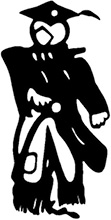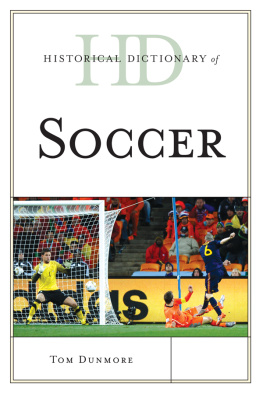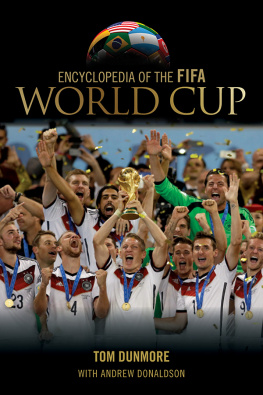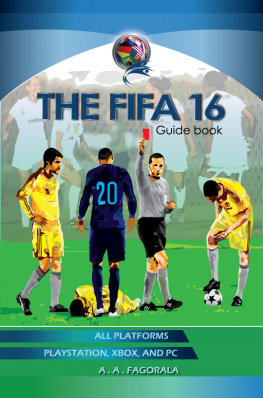
The historical dictionaries present essential information on a broad range of subjects, including American and world history, art, business, cities, countries, cultures, customs, film, global conflicts, international relations, literature, music, philosophy, religion, sports, and theater. Written by experts, all contain highly informative introductory essays of the topic and detailed chronologies that, in some cases, cover vast historical time periods but still manage to heavily feature more recent events.
Brief AZ entries describe the main people, events, politics, social issues, institutions, and policies that make the topic unique, and entries are cross-referenced for ease of browsing. Extensive bibliographies are divided into several general subject areas, providing excellent access points for students, researchers, and anyone wanting to know more. Additionally, maps, photographs, and appendixes of supplemental information aid high school and college students doing term papers or introductory research projects. In short, the historical dictionaries are the perfect starting point for anyone looking to research in these fields.
HISTORICAL DICTIONARIES OF SPORTS
Jon Woronoff, Series Editor
Competitive Swimming , by John Lohn, 2010.
Basketball , by John Grasso, 2011.
Golf , by Bill Mallon and Randon Jerris, 2011.
Figure Skating , by James R. Hines, 2011.
The Olympic Movement, Fourth Edition , by Bill Mallon and Jeroen Heijmans, 2011.
Tennis , by John Grasso, 2011.
Soccer , by Tom Dunmore, 2011.
Historical Dictionary of Soccer
Tom Dunmore

The Scarecrow Press, Inc.
Lanham Toronto Plymouth, UK
2011
Published by Scarecrow Press, Inc.
A wholly owned subsidiary of The Rowman & Littlefield Publishing Group, Inc.
4501 Forbes Boulevard, Suite 200, Lanham, Maryland 20706
http://www.scarecrowpress.com
Estover Road, Plymouth PL6 7PY, United Kingdom
Copyright 2011 by Tom Dunmore
All rights reserved . No part of this book may be reproduced in any form or by any electronic or mechanical means, including information storage and retrieval systems, without written permission from the publisher, except by a reviewer who may quote passages in a review.
British Library Cataloguing in Publication Information Available
Library of Congress Cataloging-in-Publication Data
Dunmore, Tom.
Historical dictionary of soccer / Tom Dunmore.
p. cm. (Historical dictionaries of sports)
Includes bibliographical references.
ISBN 978-0-8108-7188-5 (cloth : alk. paper) ISBN 978-0-8108-7395-7 (ebook)
1. SoccerHistoryDictionaries. I. Title.
GV942.5.D86 2011
796.334dc22 2011010683
 The paper used in this publication meets the minimum requirements of American National Standard for Information SciencesPermanence of Paperfor Printed Library Materials, ANSI/NISO Z39.48-1992.
The paper used in this publication meets the minimum requirements of American National Standard for Information SciencesPermanence of Paperfor Printed Library Materials, ANSI/NISO Z39.48-1992.
Printed in the United States of America
Editors Foreword
Soccer is clearly the worlds most popular sport. Its popularity can be measured by the millions of ordinary people, young and not so young, men and women, who play it for fun, and the millions of fans who watch it on television. It is played nearly everywhere, in more than 200 countries, by thousands of amateur teams at all levels and thousands of professional teams. Soccer has become this popular because of its intrinsic merits as a game. A large part of soccers appeal is the games basic structure and the fact it can be played almost anywhere with a minimum amount of equipment (a ball and two goals or nets). While it is mostly a spectator sport (substantially more people watch the game than play it), it remains an active form of recreation for many.
So, obviously, a Historical Dictionary of Soccer was a must for this series, and the present volume does an excellent job of presenting the sport. Inevitably, more space is given to the professional aspects, but that is how the sport has evolved and that is what will interest most readers. But soccers amateur beginnings are not forgotten, and its ascension (which could hardly have been expected by its founders) is traced in both the chronology and the introduction. The dictionary section contains more than a hundred entries on major players and professional teams, and dozens more on the major nations playing the sport. It also presents information on the various associations that promote and organize the sport, as well as those that provide key personnel, such as coaches and referees. Obviously, there is no end to what can be said about soccer, and this book is more a beginning than an end, so the bibliography points to further reading.
Most of our historical dictionaries are written by academics, but this new sports series engages the services of people active in the field. Moreover, this book represents the first time one of our historical dictionaries has been written by someone who runs a blog, namely Tom Dunmore. This gives him a good perspective on a sport that moves and changes so quickly, and an excellent point of view for knowing what is of interest to fans. So readers might want to check out www.pitchinvasion.net, which has been widely recognized by sports blog readers and writers and has won several global awards. Aside from that, Tom is an avid fan himself, and he is active in the supporters association of the Chicago Fire Soccer Club. This historical dictionary is, therefore, an excellent guide for anyone who wants to know more about soccer worldwide.
Jon WoronoffSeries Editor
Preface
Selecting the entries for a historical dictionary of soccer was extremely difficult for one simple reason: soccer is the worlds most popular sport, living up to its clichd title, the global game. Therefore, covering soccer in anything even remotely close to its entirety would require an extensive multivolume encyclopedia. Soccer is played around the world by millions in an organized fashion on teams, with countless millions more playing in recreational ad-hoc games in parks, school yards, beaches, or anywhere a ball can be kicked. Fully professional leagues exist in dozens of countries featuring thousands of different club teams. The sports Switzerland-based global governing body, Fdration Internationale de Football Association (FIFA), counts over 200 nations as members, almost all of whom participate in the quadrennial FIFA World Cup competition, arguably the worlds most-watched sporting event, closely matched only by the Olympic Games.
Due to the vast scope of this global game, it would be impossible to cover comprehensively in one volume every national teams history or major players, let alone each countrys domestic club scene, and to do justice to the games history in its organized form since the 1800s. Instead, looking at the broad sweep of the sport since its rules were codified in 19th-century Britain, the aim has been to produce a historical introduction to the key countries, club teams, competitions, players, coaches, rules, administrators, and other key parts of the game that have formed the sport of soccer as we know it today. This presentation is necessarily subjective in the areas covered, but I believe the selection of entries does provide a broad overview of the games history while retaining a global perspective.
It is important to note that this volume refers to the game as soccer throughout the text. The formal name of the sport is Association Football, but it is known by many different names around the world and is rarely given its full name. In the country of the sports formal origins, Great Britain, it is most commonly known simply as football. In the United States and a few other English-speaking countries, it is known popularly as soccer to distinguish it from another game played at a professional level, also known as football. Soccer, though, actually has its linguistic origins in Great Britain, where it was used to distinguish, in shorthand language, Association Football from other popular forms of football, particularly Rugby Football: soccer comes from the soc in Association. It was only when Association Football became by far the most popular code of football in England in recent decades that it began to be referred to much more often simply as football and much more rarely as soccer. The use of the name soccer remains appropriate in an American context due to the greater popularity of the competing game of football, and the name of the governing body in the United States is the United States Soccer Federation (USSF). I have, therefore, used soccer as the appropriate term for the sport for this volume published in the United States.











 The paper used in this publication meets the minimum requirements of American National Standard for Information SciencesPermanence of Paperfor Printed Library Materials, ANSI/NISO Z39.48-1992.
The paper used in this publication meets the minimum requirements of American National Standard for Information SciencesPermanence of Paperfor Printed Library Materials, ANSI/NISO Z39.48-1992.